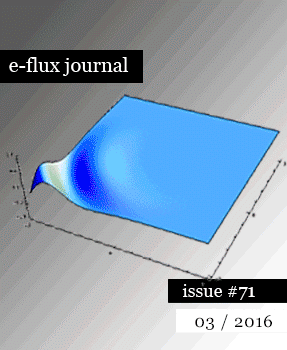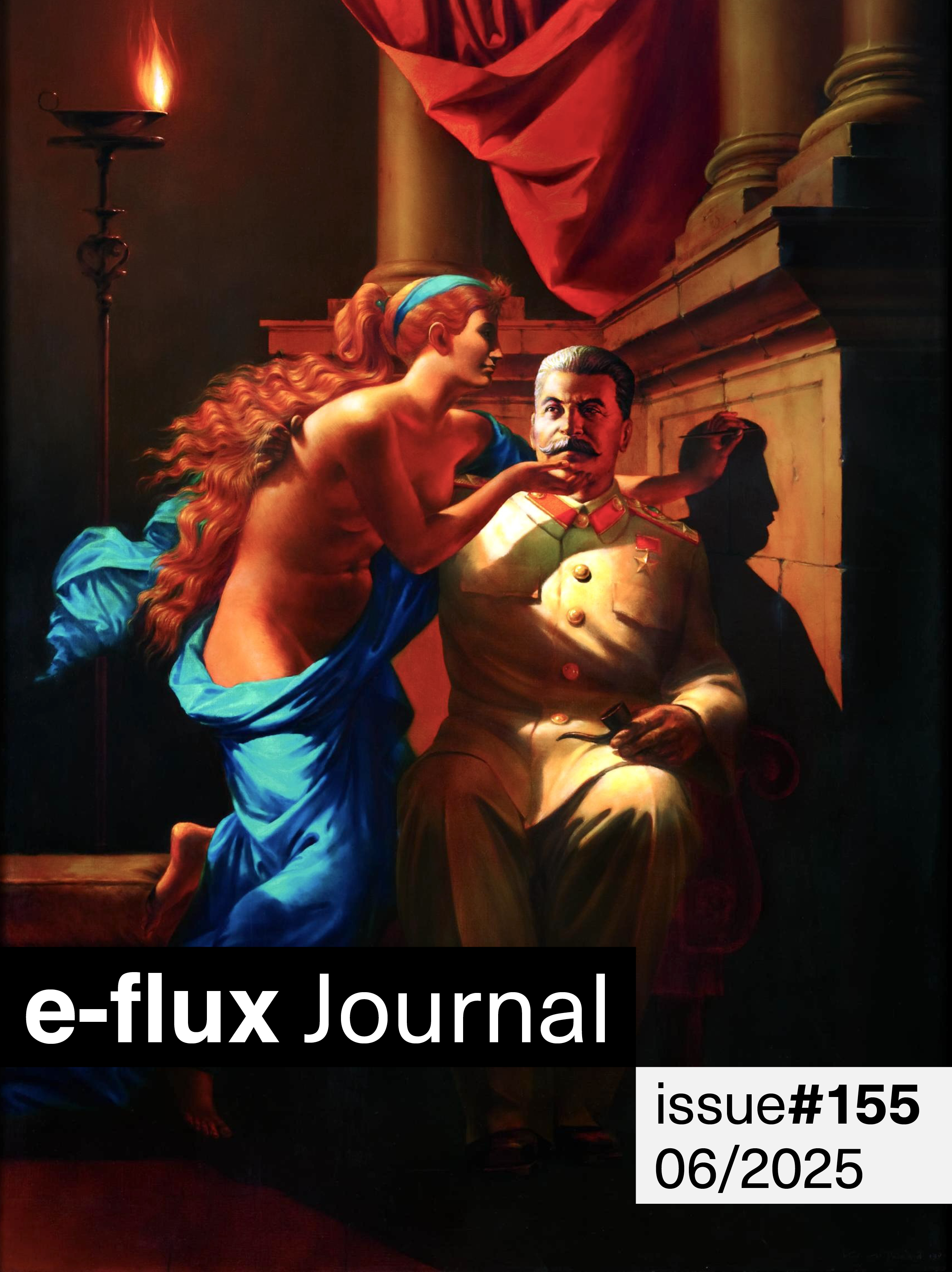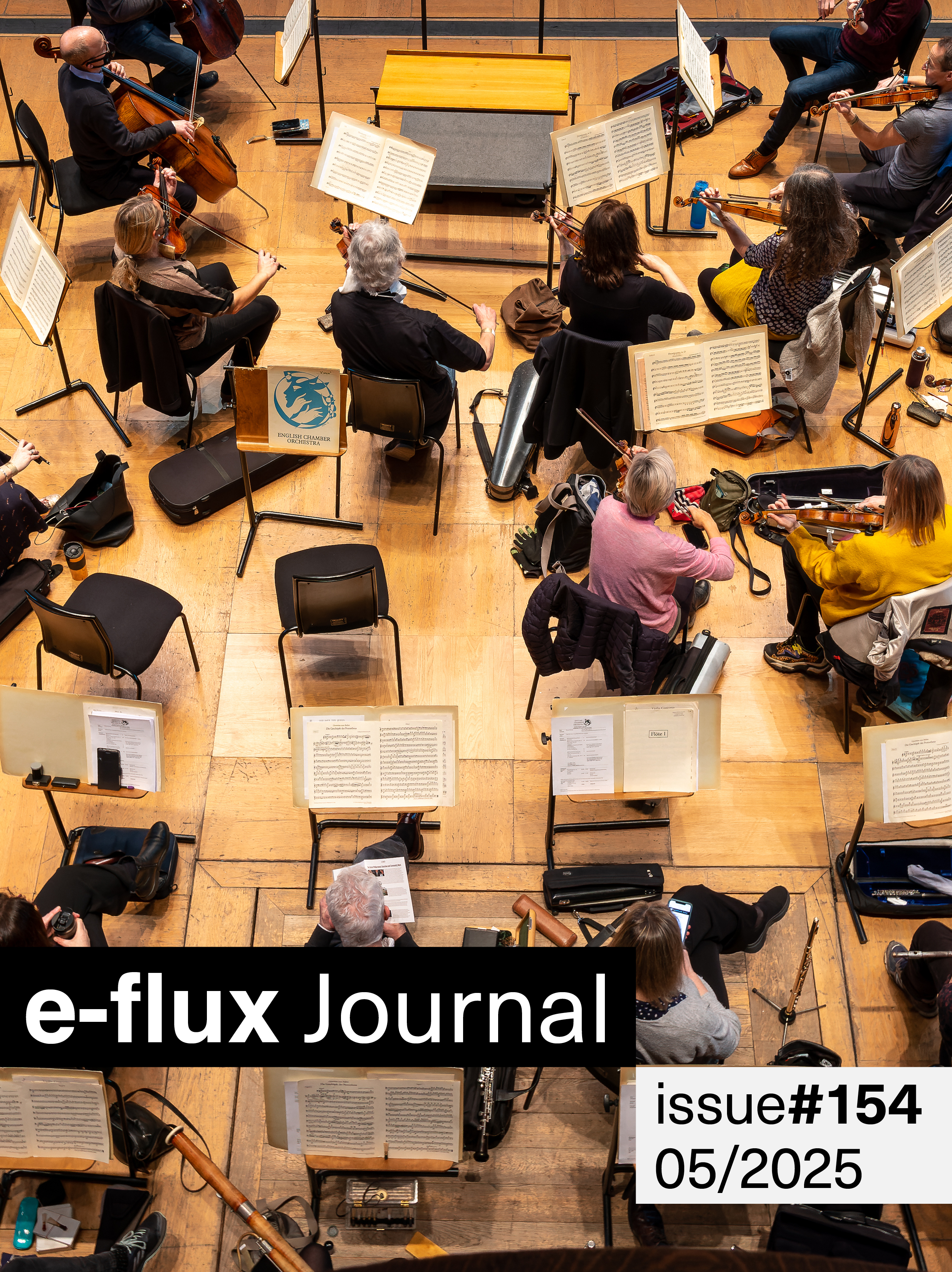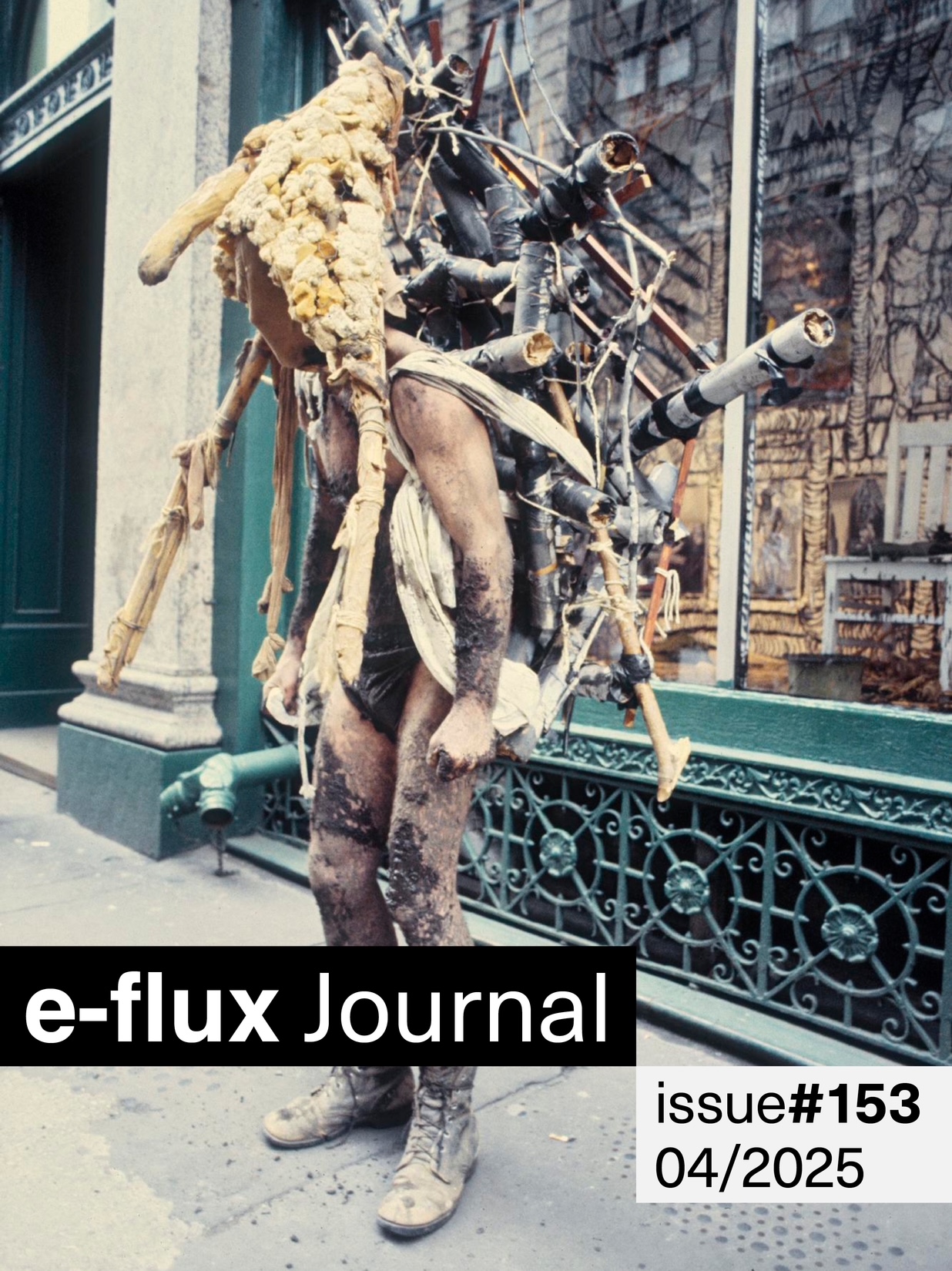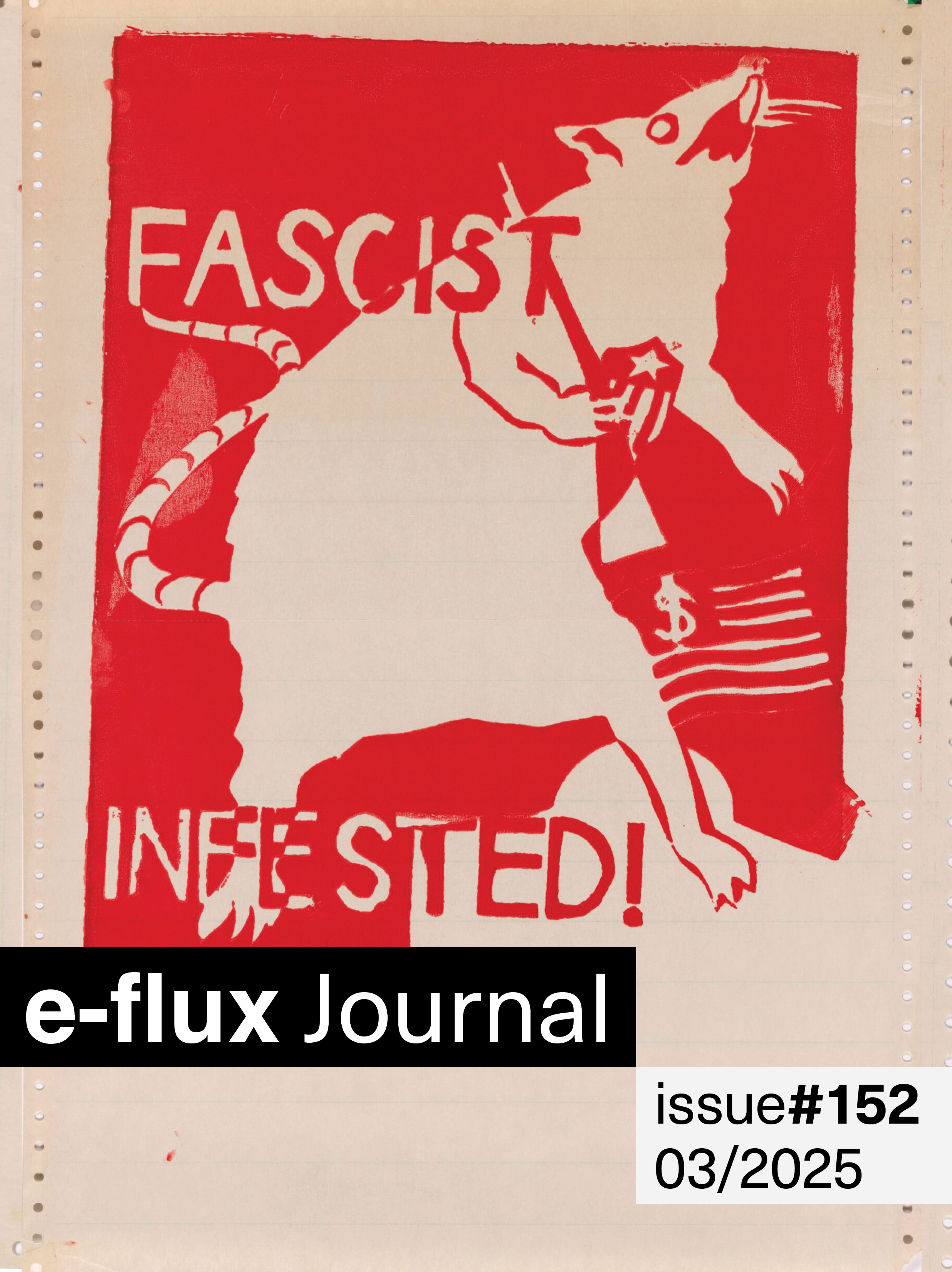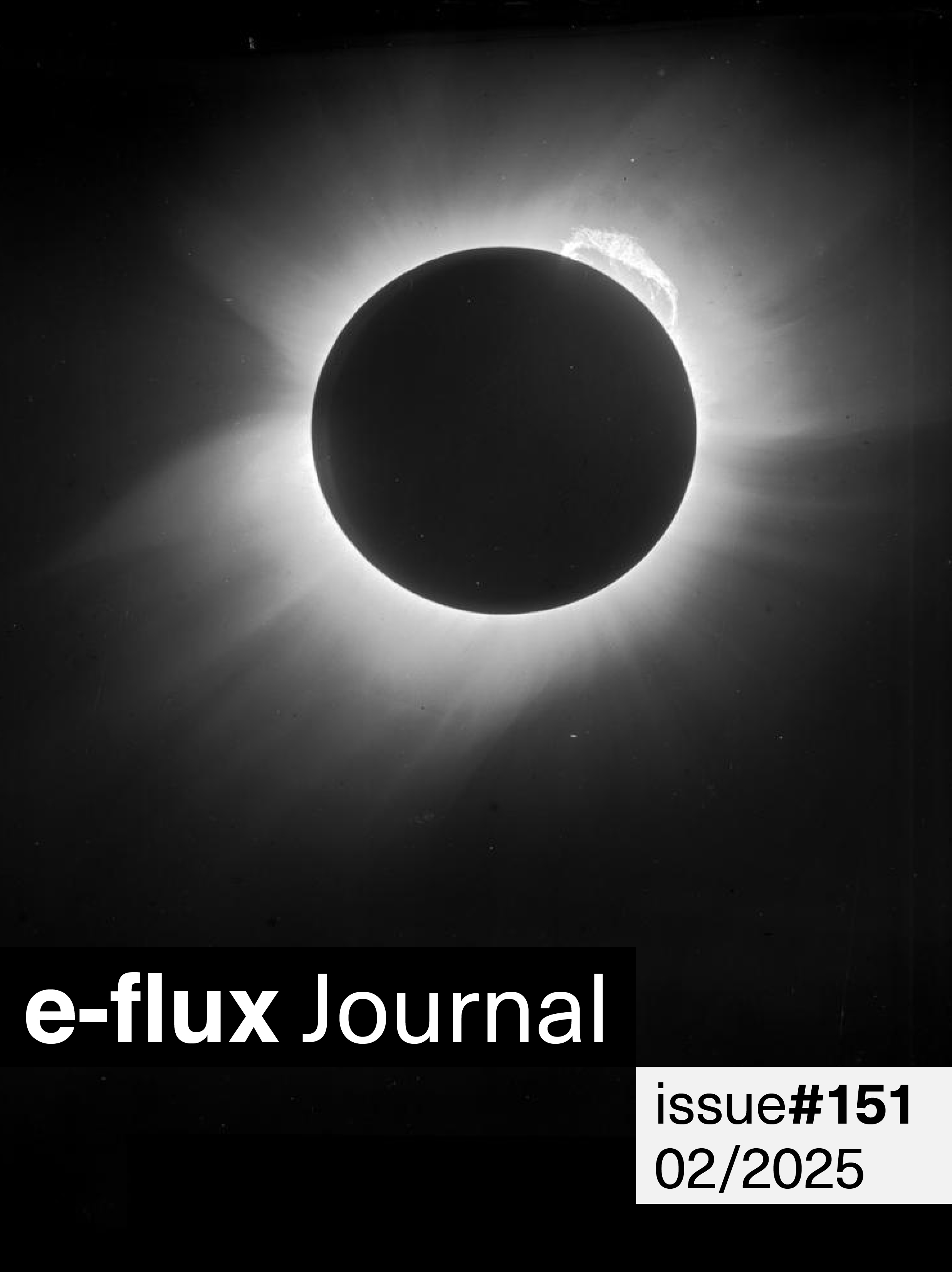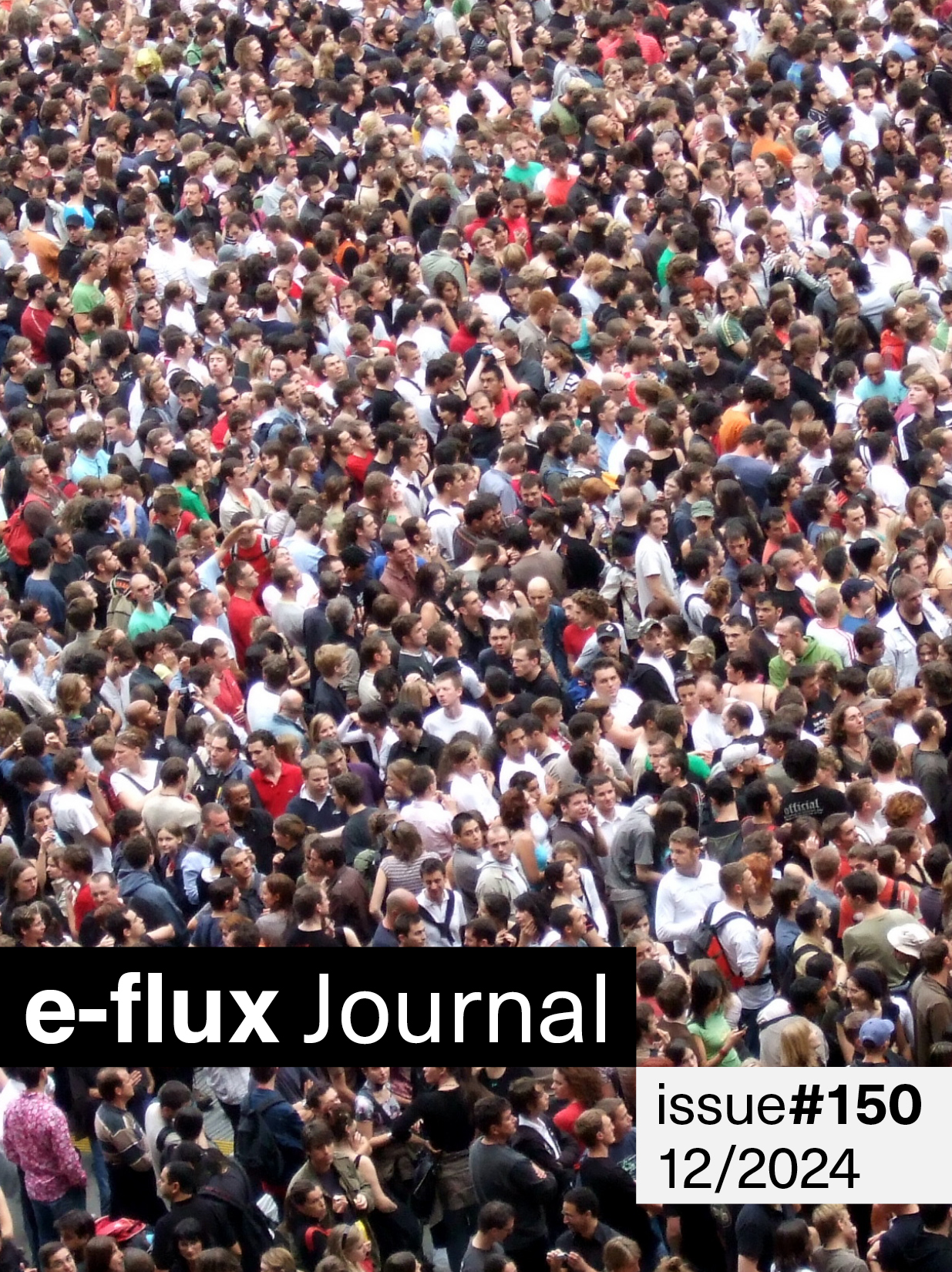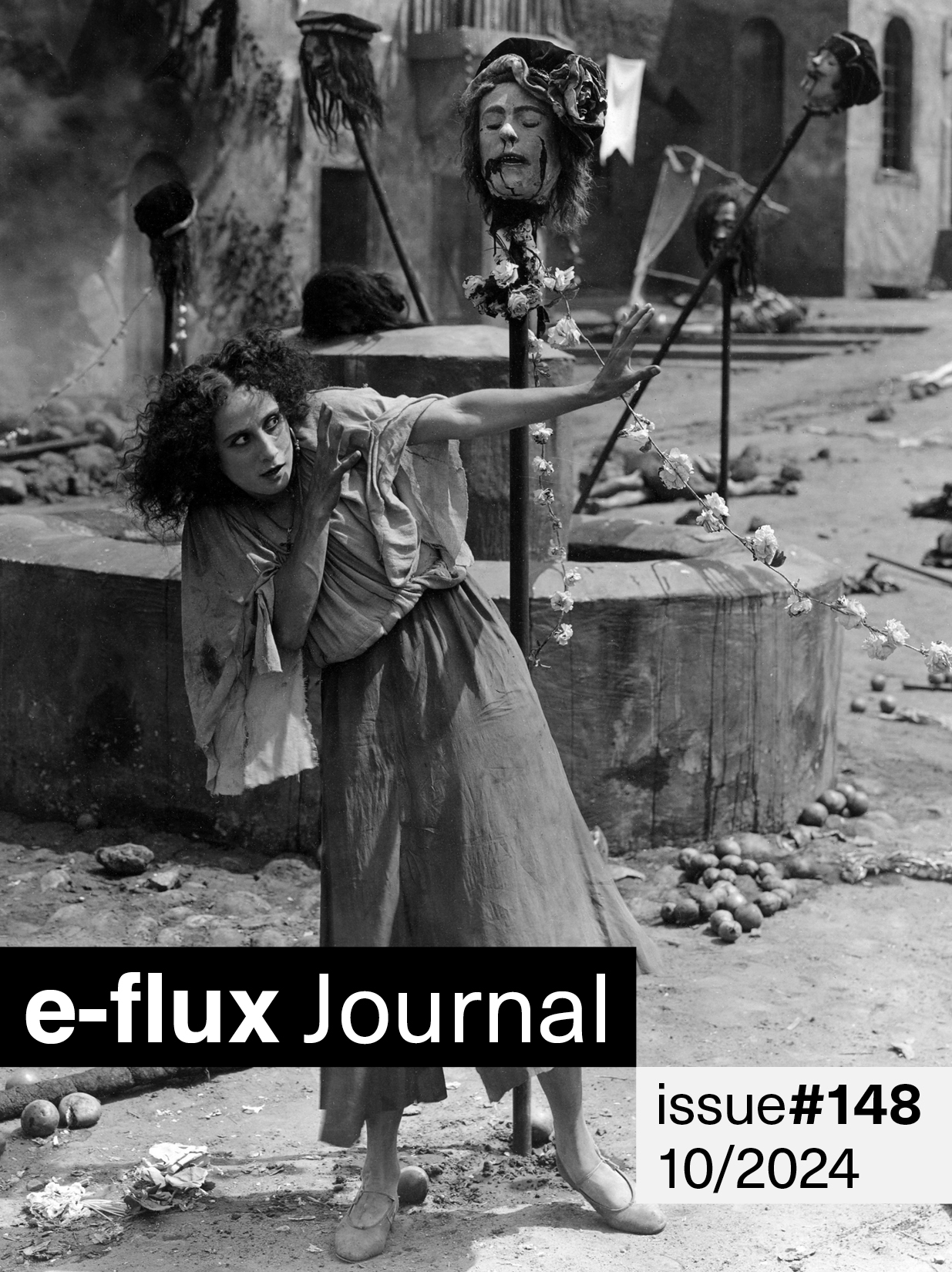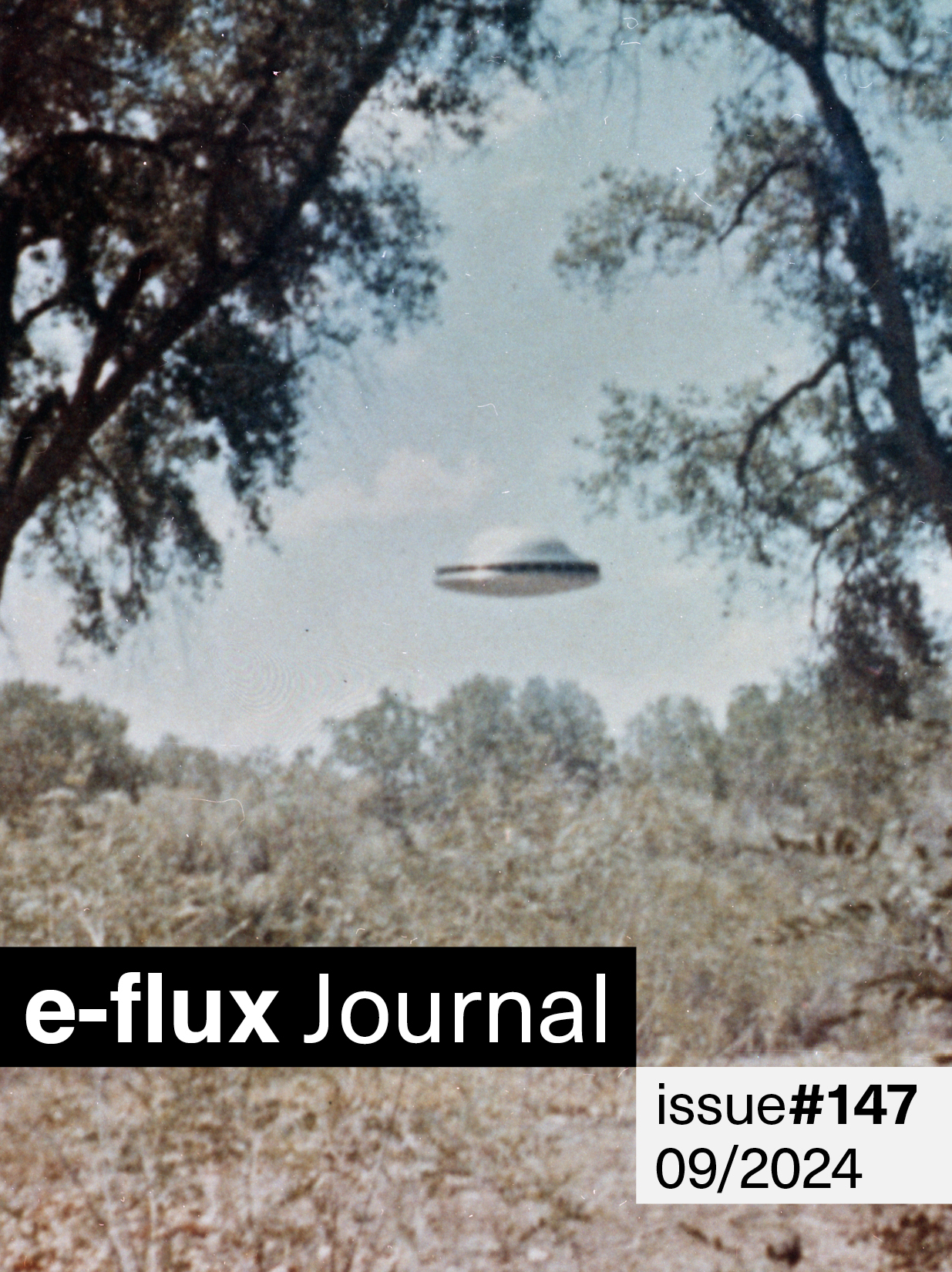e-flux journal issue 71
with Boris Groys, Saisha Grayson in conversation with Martha Rosler, Nancy Buchanan, and Andrea Bowers; Stefan Heidenreich, Jane Debevoise, Irmgard Emmelhainz, Luis Camnitzer, Alan Gilbert, and Arseny Zhilyaev in conversation with Anton Vidokle
The freeport method of art storage presents its critics with a problem. Is it something new? Or something old? What could be less surprising than an international aristocracy hiding treasures in a cave someplace? The CEO of the Geneva Freeport might have overcharged his Russian Oligarch, Dmitry Rybolovlev, by one billion dollars for thirty-five paintings, according to Sam Knight's recent, riveting account. Rybolovlev had himself acquired a large slice of the collective ownership of the means of production in 1992, when he was twenty-nine, in the form of Uralkali, a mining company developed by the State Planning Committee of the USSR in 1926. He sold his stake for five billion dollars in 2010. These sums feel like numbers from a different era, when boys regularly played with liquid money made from melting down some residual kingdom.
It's hard to know what to make of the transformation of so much Soviet capital into a Picasso or a Chagall. It feels like the end of a long sequence. It was said that Trotsky read Balzac in Central Committee meetings and that's why people didn't like him, and that it came back to haunt him, this antisocial love of high culture. And now all our masterpieces are locked in a box somewhere in the Alps while the world burns. But who among us has the courage to blame him?
Following Hito Steyerl, Stefan Heidenreich in "Freeportism as Style and Ideology" argues that although the freeport probably doesn't amount to a new mode of production, it might be a new mode of representation, replacing the one that ruled from the end of the Bretton Woods era up until the Great Recession. Like other such modes, freeportism has a value-form, post-internet art, that is optimized for contemporary accumulation, and an ideology, speculative realism, that attempts to transform its novel configuration of forces and relations into a new metaphysics.
Art, it turns out, has a unique role to play in stabilizing the contemporary regime of value. Thus the question is not the familiar one: "What is the value of art?" It is rather: "Which valuable is art and how?" The contemporary value-process requires that something be represented as art. And so art will always be represented. The relationship between the Mona Lisa and a dollar bill is not one of antagonism, but of scale, comparable to the space between the polio vaccine and an Advil.
Art is not only economically exceptional, in this respect, as Dave Beech memorably argues in his 2015 book, Art and Value, it is politically-economically exceptional. Because of art's stabilizing place within the mode of representation, it also participates in setting up the border between politics and economics in the first place. In "Big Business, Selling Shrimps," Jane DeBevoise traces the shifting coordinates of what she calls "the market imaginary" in Chinese art after Mao. Her essay takes part of its title from Wu Shanzhuan, whose Selling Shrimps consisted in selling export-quality shrimp, brought from his home in Shanghai, in a stall at the national gallery in Beijing during the famous "China/Avant-Garde Exhibition" in 1989. The authorities shut the performance down after two hours. Wu had to borrow train fare for his trip home, where so many of the century's contradictions rode alongside him: the contested boundaries between market and state, the ambivalence of nationalism, regionalism, and scale, the distance between the country and the city. Who's selling who shrimp? Who's selling whose shrimp? Who is the shrimp? And how is it being sold?
Even two hours of these sorts of questions would have been unthinkable under Mao, when Eduardo Galeano reported to Luis Camnitzer that he had seen cracked cups dating to the Ming Dynasty discarded for lack of utility. No amount of history could pile high enough to overcome their fatal lack of use-value. In "Agitprop!" Andrea Bowers, Nancy Buchanan, and Martha Rosler discuss the utility of mixing art and activism with Saisha Grayson. When is such a strategy effective? Is effective strategy the kind of thing that art does?
In "The Truth of Art," Boris Groys argues that after the arrival of mass cultural production, contemporary art and artists no longer provide access to an extraordinary or atypical way of seeing. Instead, art and artists have themselves become paradigmatic, representative; an example of the general conditions of everyday life, though this does not entail the kind of emancipation that the historical avant-garde imagined.
In "Factories of Resurrection," our very own Anton Vidokle talks with Arseny Zhilyaev about the beginning of a different Communist sequence, when some sought to transform museums into institutes for eternal life, pushing beyond representation and into the distribution of life itself. If the real work of the revolution begins, as Kropotkin had it, when everyone has bread, then perhaps it ends when nobody is dead.
—Editors
In this issue:
Boris Groys—The Truth of Art
Today everybody is involved in a complicated play with the gaze of the other. It is this play that is paradigmatic of our time, but we still don't know its rules. Professional art, though, has a long history of this play. The poets and artists of the Romantic period already began to see their own lives as their actual artworks. Nietzsche says in his Birth of Tragedy that to be an artwork is better than to be an artist. We can read Baudelaire's texts about the strategy of seduction, and we can read Roger Caillois and Jacques Lacan on the mimicry of the dangerous or on luring the evil gaze of the other into a trap by means of art. Of course, one can say that the algorithm cannot be seduced or frightened.
Saisha Grayson—Agitprop! A Conversation with Martha Rosler, Nancy Buchanan, and Andrea Bowers
As a young female, you're a phenom, the talking dog. Like: "Wow! She's got this shape, and that shape, and this shape! And she talks. She walks. She acts. She makes art! Look at that. Wow." And then, in middle age, the bloom's off the rose. That was then, they say. And then, when you've reached a certain age, it's: "Look, she's still alive! Maybe we should go talk to her before she stops being alive." There's nothing that has changed. But if I point this out to men, they may say, "But I disappeared, too." No, you didn't.
Stefan Heidenreich—Freeportism as Style and Ideology: Post-Internet and Speculative Realism, Part I
Never before now have so many artworks been produced to remain hidden, all enclosed in disenchanted wooden boxes, suspended in a permanent circuit of exchange, in a place called a "freeport" because it is free of customs duties and taxes of all kinds. It is free also of audience and spectators because no one is allowed to see the art; it is an anti-theatron, a place of un-seeing. We must examine the conflict between the forces that create new ways of representing and being seen, and the relations that just as quickly place these out of sight.
Jane Debevoise—Big Business, Selling Shrimps: The Market as Imaginary in Post-Mao China
Dear Customers: As our entire nation celebrates the Year of the Snake, in order to enrich the spiritual and material life of the people of our nation's capital, I have brought from my hometown of Zhoushan the highest-quality export shrimp (to be sold to the domestic market). Venue of display and sale: National Gallery of Art. Price: 9.5 yuan per catty. Hurry while supplies last.
Irmgard Emmelhainz—Geopolitics and Contemporary Art, Part II: The Nation State as the Possible Container for Global Struggles
Autonomy means creating sites where rules different than those imposed on us by the neoliberal system can be applied to construct different political, social, and economic relationships. To build autonomous spaces is to recover the immediate bases of social reproduction in urbanized areas. What is at stake is the materialization of forms of power and how they are distributed in space. In that regard, art has been and can continue to be a privileged laboratory for studying fields of power and for experimenting with sociatry, therapy, and new models of assemblage, organization, exchange, and the reproduction of life, not of capital. But without a social base, without establishing long-lasting collectivity in relation to a political project, it is difficult to begin building and inhabiting the world differently.
Luis Camnitzer—The Cracked Ming Cup
In 1963, the Uruguayan writer and journalist Eduardo Galeano went to China to interview the last emperor, Pu Yi. He and I were both working for Marcha, a Uruguayan weekly, at the time. Upon his return he commented about finding centuries-old Ming cups treated as useless garbage because they were cracked and had lost their functionality. This wasn't meant as a critical remark; Galeano was just surprised at how the parameters for what was considered valuable differed across cultures. A decade or two later I participated in a tour that took a group of visiting faculty through the art conservation program at SUNY Buffalo. They showed us an early twentieth-century mechanical toy that had been used for an exercise in restoration. In good shape, the object was probably worth less than one hundred dollars, but the labor invested in restoring it was worth well over ten times that much. The result was impressive.
Alan Gilbert—Walid Raad's Spectral Archive, Part II: Testimony of Ghosts
Why is there so little of the present in Raad's art? Where are its human occupants? The few that are seen, as in the video We can make rain but no one came to ask, quickly disappear from the frame. Justice, truth, and reconciliation can exist without care, but there's no expiation without care. Along with being a textbook sign of the traumatic symptom, the constant repetitions in Raad's art are wedged between conflict and reconciliation. While at times they may resemble transcendence, they instead create the space—and time—for a different way of understanding guilt and expiation.
Arseny Zhilyaev—Factories of Resurrection: An Interview with Anton Vidokle
Utility in art is something that probably needs to be described carefully right now: it seems to me that there is a tendency these days to put a lot of emphasis on the "usefulness" of some types of artistic projects. It still remains to be seen if these works are really useful or are merely an expression of insecurity about the elusive nature and value of art, or of a reluctance on the part of some public institutions to fund activities that do not appear to have immediate and direct benefits for their constituencies, that are difficult to understand or appreciate.
The print edition of e-flux journal can now be found at:
Amsterdam: De Appel arts centre / Rijksakademie van beeldende kunsten Andratx: CCA Andratx Antwerp: M HKA Museum van Hedendaagse Kunst Århus: Kunsthal Aarhus Athens:OMMU Auckland: split/fountain Austin: Arthouse at the Jones Center Baden-Baden: Staatliche Kunsthalle Baden-Baden Banff: Walter Phillips Gallery, The Banff Centre Barcelona: Arts Santa Mònica / MACBA Basel: Kunsthalle Basel / Museum für Gegenwartskunst Basel Beijing and Guangzhou: Vitamin Creative Space Beirut: 98weeks Belgrade: Cultural Center of Belgrade Bergen: Bergen Kunsthall / Rakett Berlin: b_books / Berliner Künstlerprogramm – DAAD / Bücherbogen am Savignyplatz GmbH / do you read me? / Haus der Kulturen der Welt / Motto / Neuer Berliner Kunstverein (n.b.k.) / Pro qm Bern: Kunsthalle Bern / Lehrerzimmer Bialystok: Arsenal Gallery Bielefeld: Bielefelder Kunstverein Biella: UNIDEE - University of Ideas, Cittadellarte - Fondazione Pistoletto Onlus Birmingham: Eastside Projects / Ikon Gallery Bologna: MAMbo – Museo d'Arte Moderna di Bologna Bregenz: Kunsthaus Bregenz Bristol: Arnolfini Brussels: WIELS Contemporary Art Centre Bucharest: National Museum of Contemporary Art Bucharest (MNAC) / Pavilion Unicredit Cairo: Beirut / Contemporary Image Collective (CIC) / Townhouse Gallery Calgary: The New Gallery Cambridge: Wysing Arts Center Castello: Espai d´art contemporani de Castelló (EACC) Chicago: Graham Foundation / Reva and David Logan Center for the Arts / The Renaissance Society at The University of Chicago Cologne: Kölnischer Kunstverein Copenhagen: Overgaden Derry: CCA Derry~Londonderry Dijon: Les Ateliers Vortex Dublin: Dublin City Gallery The Hugh Lane / Project Arts Centre Dusseldorf: Kunstverein für die Rheinlande und Westfalen Eindhoven: Van Abbemuseum Frankfurt: Städelschule / Portikus Gdansk: Łaźnia Centre For Contemporary Art Geneva: Centre de la photographie Ghent: S.M.A.K. Glasgow: CCA Centre for Contemporary Arts / Glasgow Sculpture Studios Graz: Grazer Kunstverein / Kunsthaus Graz / Künstlerhaus KM– / para_SITE Gallery Grijon: LABoral Centre for Art and Creative Industries Groningen: University of Groningen Hamburg: Kunstverein in Hamburg Helsinki: Museum of Contemporary Art Kiasma Hobart: CAST Gallery / INFLIGHT Hong Kong: Asia Art Archive Iași: theartstudent at the University of Fine Arts, Iași Innsbruck: Galerie im Taxispalais Istanbul: BAS / DEPO / Galeri Zilberman / SALT Johannesburg: Center for Historical Reenactments Kansas City: La Cucaracha Press Klagenfurt: Kunstraum Lakeside Kristiansand: SKMU Sørlandets Kunstmuseum Kyiv: Visual Culture Research Center Leeds: Pavilion Lisbon: Maumaus, Escola de Artes Visuais / Oporto / Kunsthalle Lissabon Ljubljana: Moderna galerija Llandudno: MOSTYN London: Architectural Association—Bedford Press / Calvert 22 / Chisenhale Gallery / Gasworks / ICA / Serpentine Gallery / The Showroom / Visiting Arts Los Angeles: REDCAT Loughborough: Radar, Loughborough University Luxembourg: Casino Luxembourg Madrid:Brumaria / CA2M / PENSART Maastricht: Jan van Eyck Academie Marfa: Ballroom Marfa Melbourne: Monash University Museum of Art (MUMA) / World Food Books Merrylands: Cerdon College Mexico City: Librería Casa Bosques / Proyectos Monclova Milan: Fondazione Nicola Trussardi / HangarBicocca Milton Keynes: MK Gallery Minneapolis: Walker Art Center Monaco: Nouveau Musée National de Monaco Moncton: Fixed Cog Hero (a bicycle courier company) Montreal: Canadian Centre for Architecture (CCA) Moscow: Garage Center for Contemporary Culture Munich: Haus der Kunst / Museum Villa Stuck / Walther Koenig Bookshop New Delhi:Sarai CSDS New York: e-flux / Independent Curators International (ICI) / Printed Matter, Inc / McNally Jackson Nottingham: Nottingham Contemporary Omaha: Bemis Center for Contemporary Arts Oslo: Kunstnernes hus Oxford: Modern Art Oxford Padona: Fondazione March Per L'Arte Contemporanea Paris: castillo/corrales – Section 7 Books / Centre Pompidou / Les Laboratoires d'Aubervilliers Philadelphia: Bodega Pori: Pori Art Museum Portland: Portland Institute for Contemporary Art (PICA) / Publication Studio Porto: Museu de Arte Contemporânea de Serralves Prague: DOX Centre for Contemporary Art Prishtina: Stacion – Center for Contemporary Art Prishtina Providence: AS220 Reykjavik: Reykjavik Art Museum Riga: kim? Rio de Janeiro: Capacete / A Gentil Carioca Rome: MACRO Museo d'Arte Contemporanea Roma / Opera Rebis Rotterdam: Piet Zwart Institute / Witte de With | Center for Contemporary Art Saint-Nazaire: Le Grand Cafe, centre d'art contemporain Salzburg: Salzburger Kunstverein San Antonio: Artpace San Sebastián: Centro Internacional Cultura Contemporanea São Paulo:KUNSTHALLE São Paulo / Master in Visual Arts, Faculdade Santa Marcelina Sarajevo: Sarajevo Center for Contemporary Art (SCCA) Seoul: The Books / The Book Society Sherbrooke:Foreman Art Gallery of Bishop's University Singapore: The Ngee Ann Kongsi Library Skopje:Press to Exit Project Space Sofia: ICA-Sofia / Sofia Art Gallery / SWIMMING POOL St Erme Outre et Ramecourt: Performing Arts Forum St Louis: White Flag Projects Stockholm:Bonniers Konsthall / Iaspis / Index - The Swedish Contemporary Art Foundation / Konstfack, University College of Art, Craft and Design / Konsthall C / Tensta konsthall Stuttgart:Württembergischer Kunstverein Stuttgart Sydney: Artspace Tallinn: Kumu Art Museum of Estonia The Hague: Stroom Den Haag Toronto: Art Metropole / Mercer Union / The Power PlantTorun: Centre of Contemporary Art Znaki Czasu in Torun (CoCA) Toowoomba: Raygun Contemporary Art Projects Trieste: Trieste Contemporanea Trondheim: NTNU University Library Umeå: Bildmuseet, Umeå University Utrecht: BAK, basis voor actuele kunst / Casco – Office for Art, Design and Theory Vaduz: Kunstmuseum Liechtenstein Valencia: IVAM–Biblioteca Valletta: Malta Contemporary Art Foundation Vancouver: Artspeak / Fillip—Motto / Morris and Helen Belkin Art Gallery, University of British Columbia / READ Books, Charles H. Scott Gallery, Emily Carr University of Art and Design Venice: The Biennale Library-ASAC Vienna: Kunsthalle Wien / Salon für Kunstbuch—21er Haus Vigo: MARCO, Museo de Arte Contemporanea de Vigo Vilnius: Contemporary Art Centre (CAC) Vitoria-Gasteiz: Centro Cultural Montehermoso Kulturunea Visby: BAC – Baltic Art Center Warsaw: Zachęta National Gallery of Art Wiesbaden: Nassauischer Kunstverein (NKV) Yerevan: Armenian Center For Contemporary Experimental Art (NPAK) Zagreb: Galerija Miroslav Kraljevic / Gallery Nova / DeLVe | Institute for Duration, Location and Variables Zurich: Postgraduate Program in Curating, Zürich University of the Arts / Shedhalle / White Space.
